Bird J. Electrical Circuit Theory and Technology
Подождите немного. Документ загружается.

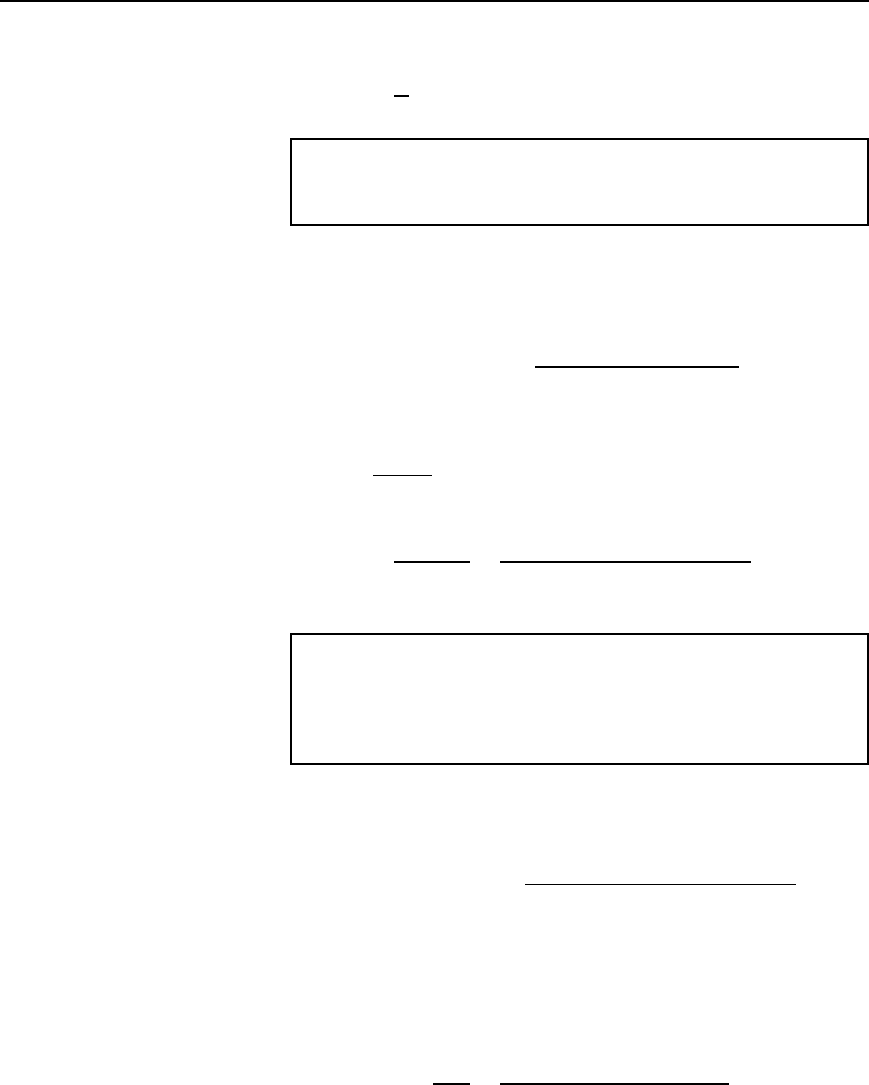
718 Electrical Circuit Theory and Technology
(d) From equation (39.3), dissipation factor,
D D
1
Q
D 0.030159 or 0.030, correct to 3 decimal places.
Problem 2. A capacitor has a loss angle of 0.025 rad, and when it
is connected across a 5 kV, 50 Hz supply, the power loss is 20 W.
Determine the component values of the equivalent parallel circuit.
From equation (39.5),
power loss D V
2
ωC tanυ
i.e., 20 D 5000
2
250C tan0.025
from which capacitance C D
20
5000
2
250 tan0.025
D 0.102 mF
(Note tan0.025 means ‘the tangent of 0.025 rad’)
From equation (39.4), for a parallel equivalent circuit,
tanυ D
1
R
P
ωC
P
from which, parallel resistance,
R
P
D
1
ωC
P
tanυ
D
1
2500.102 ð 10
6
tan0.025
i.e., R
P
= 1.248 MZ
Problem 3. A 2000 pF capacitor has an alternating voltage of
20 V connected across it at a frequency of 10 kHz. If the power
dissipated in the dielectric is 500
µW, determine (a) the loss angle,
(b) the equivalent series loss resistance, and (c) the equivalent
parallel loss resistance.
(a) From equation (39.5), power loss D V
2
ωC tanυ, i.e.,
500 ð 10
6
D 20
2
210 ð 10
3
2000 ð 10
12
tanυ
Hence tanυ D
500 ð 10
6
20
2
210 ð 10
3
2000 ð 10
12
D 9.947 ð 10
3
from which, loss angle, d = 0.57
°
or 9.95 × 10
−3
rad.
(b) From equation (39.1), for an equivalent series circuit,
tanυ D R
S
ωC
S
, from which equivalent series resistance,
R
S
D
tanυ
ωC
S
D
9.947 ð10
3
210 ð 10
3
2000 ð 10
12
i.e., R
S
= 79.16 Z
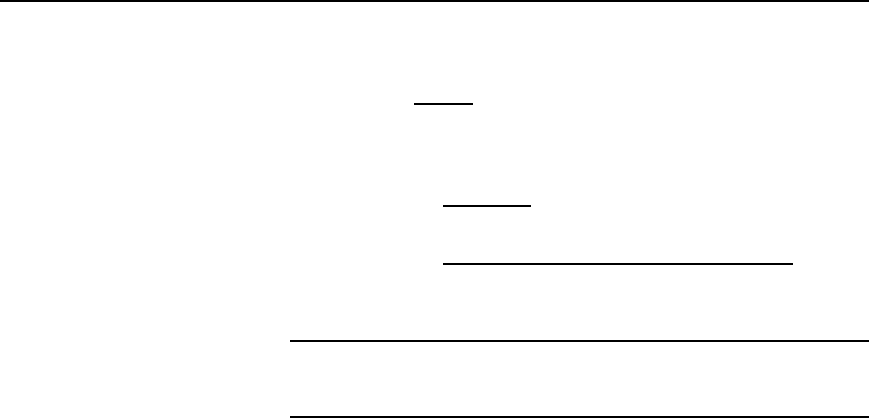
Dielectrics and dielectric loss 719
(c) From equation (39.4), for an equivalent parallel circuit,
tanυ D
1
R
P
ωC
P
from which equivalent parallel resistance,
R
P
D
1
tan υωC
P
D
1
9.947 ð 10
3
210 ð 10
3
2000 ð 10
12
i.e., R
P
= 800 kZ
Further problems on dielectric loss and loss angle may be found in
Section 39.9 following, problems 1 to 5.
39.9 Further problems
on dielectric loss and loss
angle
1 The equivalent series circuit for a capacitor consists of a 3 resistance
in series with a 250 pF capacitor. Determine the loss angle of the
capacitor at a frequency of 5 MHz, giving the answer in degrees and
in radians. Find also for the capacitor, (a) the power factor, (b) the
Q-factor, and (c) the dissipation factor.
[1.35
°
or 0.024 rad (a) 0.0236 (b) 42.4 (c) 0.0236]
2 A capacitor has a loss angle of 0.008 rad and when it is connected
across a 4 kV, 60 Hz supply the power loss is 15 W. Determine the
component values of (a) the equivalent parallel circuit, and (b) the
equivalent series circuit.
[(a) 0.311
µF, 1.066 M (b) 0.311 µF, 68.24 ]
3 A coaxial cable has a capacitance of 4
µF and a dielectric power loss
of 12 kW when operated at 50 kV and frequency 50 Hz. Calculate
(a) the value of the loss angle, and (b) the equivalent parallel resis-
tance of the cable.
[(a) 0.219
°
or 3.82 ð 10
3
rad (b) 208.3 k]
4 What are the main reasons for power loss in capacitors with solid
dielectrics? Explain the term ‘loss angle’.
A voltage of 10 V and frequency 20 kHz is connected across a 1 nF
capacitor. If the power dissipated in the dielectric is 0.2 mW, deter-
mine (a) the loss angle, (b) the equivalent series loss resistance, and
(c) the equivalent parallel loss resistance.
[(a) 0.912
°
or 0.0159 rad (b) 126.7 (c) 0.5 M]
5 The equivalent series circuit for a capacitor consists of a 0.5 resistor
in series with a capacitor of reactance 2 k. Determine for the capac-
itor (a) the loss angle, (b) the power factor, and (c) the equivalent
parallel resistance.
[(a) 0.014
°
or 2.5 ð 10
4
rad (b) 2.5 ð10
4
(c) 8 M]
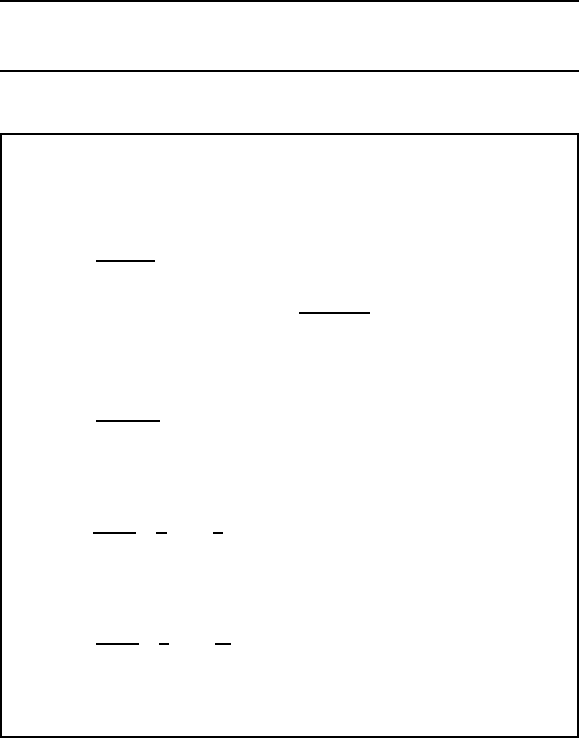
40 Field theory
At the end of this chapter you should be able to:
ž understand field plotting by curvilinear squares
ž show that the capacitance between concentric cylinders,
C D
2ε
0
ε
r
lnb/a
and calculate C given values of radii a and b
ž calculate dielectric stress E D
V
r lnb/a
ž appreciate dimensions of the most economical cable
ž show that the capacitance of an isolated twin line,
C D
ε
0
ε
r
lnD/a
and calculate C given values of a and D
ž calculate energy stored in an electric field
ž show that the inductance of a concentric cylinder,
L D
0
r
2
1
4
C ln
b
a
and calculate L given values of a
and b
ž show that the inductance of an isolated twin line,
C D
0
r
1
4
C ln
D
a
and calculate L given values of a
and D
ž calculate energy stored in an electromagnetic field
40.1 Field plotting by
curvilinear squares
Electric fields, magnetic fields and conduction fields (i.e., a region in
which an electric current flows) are analogous, i.e., they all exhibit similar
characteristics. Thus they may all be analysed by similar processes. In the
following the electric field is analysed
Figure 40.1 shows two parallel plates A and B. Let the potential on
plate A be CV volts and that on plate B be V volts. The force acting on
a point charge of 1 coulomb placed between the plates is the electric field
strength E. It is measured in the direction of the field and its magnitude
depends on the p.d. between the plates and the distance between the
plates. In Figure 40.1, moving along a line of force from plate B to plate
A means moving from V to CV volts. The p.d. between the plates
is therefore 2 V volts and this potential changes linearly when moving
from one plate to the other. Hence a potential gradient is followed which
changes by equal amounts for each unit of distance moved.

Field theory 721
Figure 40.1 Lines of force intersecting equipotential lines in an electric
field
Lines may be drawn connecting together all points within the field
having equal potentials. These lines are called equipotential lines and
these have been drawn in Figure 40.1 for potentials of
2
3
V,
1
3
V, 0,
1
3
Vand
2
3
V. The zero equipotential line represents earth potential
and the potentials on plates A and B are respectively above and below
earth potential. Equipotential lines form part of an equipotential surface.
Such surfaces are parallel to the plates shown in Figure 40.1 and the
plates themselves are equipotential surfaces. There can be no current flow
between any given points on such a surface since all points on an equipo-
tential surface have the same potential. Thus a line of force (or flux) must
intersect an equipotential surface at right angles. A line of force in an
electrostatic field is often termed a streamline.
An electric field distribution for a concentric cylinder capacitor is
shown in Figure 40.2. An electric field is set up in the insulating medium
between two good conductors. Any volt drop within the conductors can
usually be neglected compared with the p.d.’s across the insulation since
the conductors have a high conductivity. All points on the conductors
are thus at the same potential so that the conductors form the boundary
equipotentials for the electrostatic field. Streamlines (or lines of force)
which must cut all equipotentials at right angles leave one boundary
at right angles, pass across the field, and enter the other boundary at
right angles.
Figure 40.2 Electric field
distribution for a concentric
cylinder capacitor
In a magnetic field, a streamline is a line so drawn that its direction is
everywhere parallel to the direction of the magnetic flux. An equipotential
surface in a magnetic field is the surface over which a magnetic pole may
be moved without the expenditure of work or energy.
In a conduction field, a streamline is a line drawn with a direction
which is everywhere parallel to the direction of the current flow.
A method of solving certain field problems by a form of graphical
estimation is available which may only be applied, however, to plane
linear fields; examples include the field existing between parallel plates
or between two long parallel conductors. In general, the plane of a field
may be divided into a number of squares formed between the line of
force (i.e. streamline) and the equipotential. Figure 40.3 shows a typical
pattern. In most cases true squares will not exist, since the streamlines and
equipotentials are curved. However, since the streamlines and the equipo-
tentials intersect at right angles, square-like figures are formed, and these
are usually called ‘curvilinear squares’. The square-like figure shown
Figure 40.3 Curvilinear
square
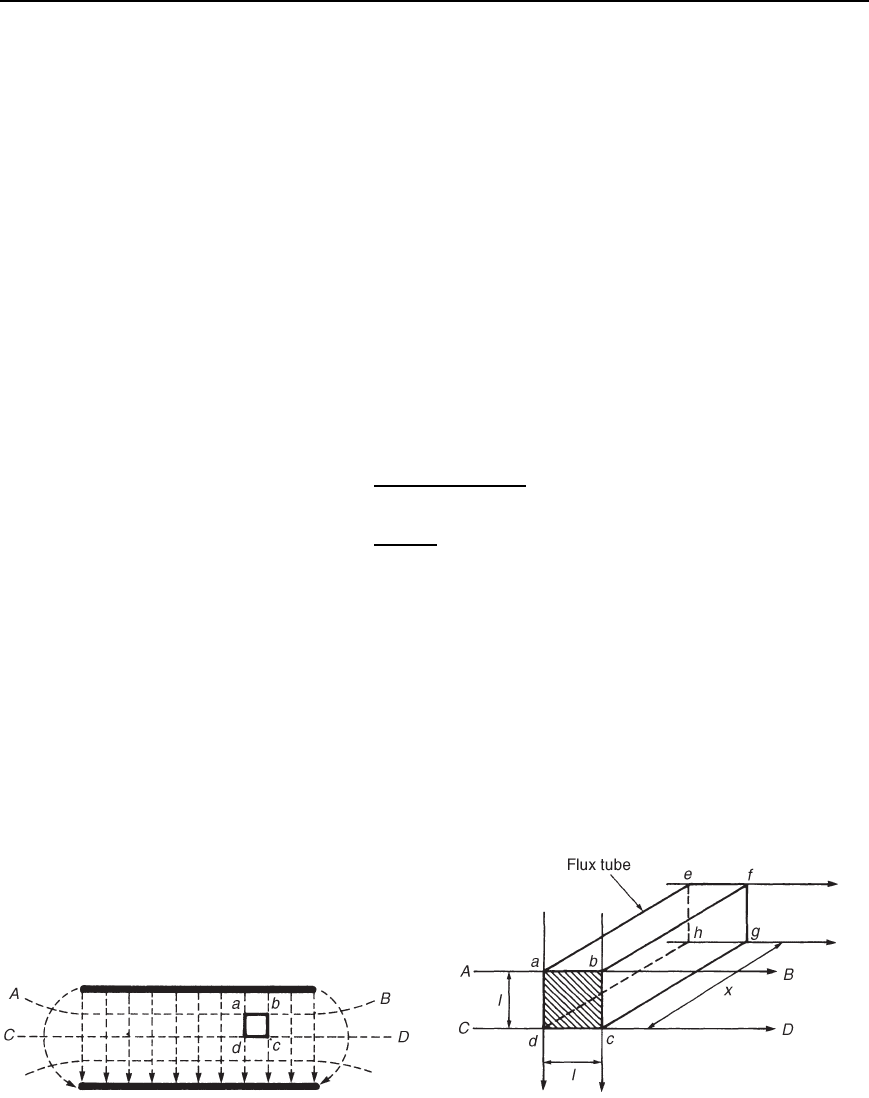
722 Electrical Circuit Theory and Technology
in Figure 40.3 is a curvilinear square since, on successive subdivision by
equal numbers of intermediate streamlines and equipotentials, the smaller
figures are seen to approach a true square form.
When subdividing to give a field in detail, and in some cases for the
initial equipotentials, ‘Moores circle’ technique can be useful in that
it tends to eliminate the trial and error process. If, say, two flux lines
and an equipotential are given and it is required to draw a neighbouring
equipotential, a circle tangential to the three given lines is constructed.
The new equipotential is then approximately tangential to the circle, as
shown in Figure 40.3.
Consider the electric field established between two parallel metal plates,
as shown in Figure 40.4. The streamlines and the equipotential lines are
shown sketched and are seen to form curvilinear squares. Consider a true
square abcd lying between equipotentials AB and CD. Let this square
be the end of x metres depth of the field forming a flux tube between
adjacent equipotential surfaces abfe and cdhg as shown in Figure 40.5.
Let l be the length of side of the squares. Then the capacitance C
1
of the
flux tube is given by
C
1
D
ε
0
ε
r
(area of plate)
plate separation
i.e., C
1
D
ε
0
ε
r
lx
l
D "
0
"
r
x 40.1
Thus the capacitance of the flux tube whose end is a true square is inde-
pendent of the size of the square.
Let the distance between the plates of a capacitor be divided into an
exact number of parts, say n (in Figure 40.4, n D 4). Using the same
scale, the breadth of the plate is divided into a number of parts (which is
not always an integer value), say m (in Figure 40.4, m D 10, neglecting
fringing). Thus between equipotentials AB and CD in Figure 40.4 there
are m squares in parallel and so there are m capacitors in parallel. For m
capacitors connected in parallel, the equivalent capacitance C
T
is given by
C
T
D C
1
C C
2
C C
3
CÐÐÐCC
m
. If the capacitors have the same value,
Figure 40.4 Figure 40.5
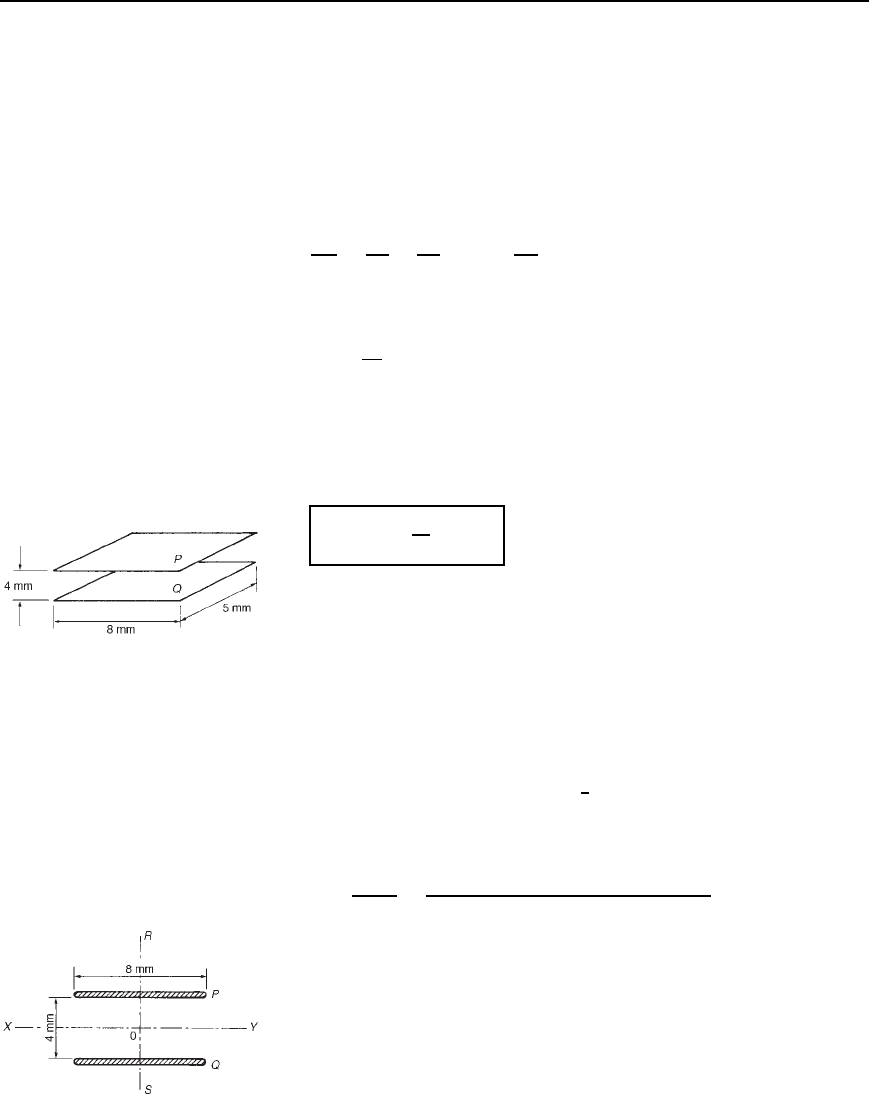
Field theory 723
i.e., C
1
D C
2
D C
3
DÐÐÐDC
m
D C
t
, then
C
T
D mC
t
40.2
Similarly, there are n squares in series in Figure 40.4 and thus n capacitors
in series.
For n capacitors connected in series, the equivalent capacitance C
T
is
given by
1
C
T
D
1
C
1
C
1
C
2
CÐÐÐC
1
C
n
If C
1
D C
2
DÐÐÐDC
n
D C
t
then 1/C
T
D n/C
t
, from which
C
T
D
C
t
n
40.3
Thus if m is the number of parallel squares measured along each
equipotential and n is the number of series squares measured along each
streamline (or line of force), then the total capacitance C of the field is
given, from equations (40.1)–(40.3), by
C = "
0
"
r
x
m
n
farads
40.4
For example, let a parallel-plate capacitor have plates 8 mm ð 5mmand
spaced 4 mm apart (See Figure 40.6). Let the dielectric have a relative
permittivity 3.5. If the distance between the plates is divided into, say,
four equipotential lines, then each is 1 mm apart. Hence n D 4.
Figure 40.6
Using the same scale, the number of lines of force from plate P to
plate Q must be 8, i.e. m D 8. This is, of course, neglecting any fringing.
From equation (40.4), capacitance C D ε
0
ε
r
xm/n, where x D 5mmor
0.005 m in this case. Hence
C D 8.85 ð 10
12
3.50.005
8
4
D 0.31 pF
(Using the normal equation for capacitance of a parallel-plate capacitor,
C D
ε
0
ε
r
A
d
D
8.85 ð 10
12
3.50.008 ð 0.005
0.004
D 0.31 pF
The capacitance found by each method gives the same value; this is
expected since the field is uniform between the plates, giving a field plot
of true squares.)
The effect of fringing may be considered by estimating the capacitance
by field plotting. This is described below.
In the side view of the plates shown in Figure 40.7, RS is the medial
line of force or medial streamline, by symmetry. Also XY is the medial
equipotential. The field may thus be divided into four separate symmet-
rical parts.
Figure 40.7
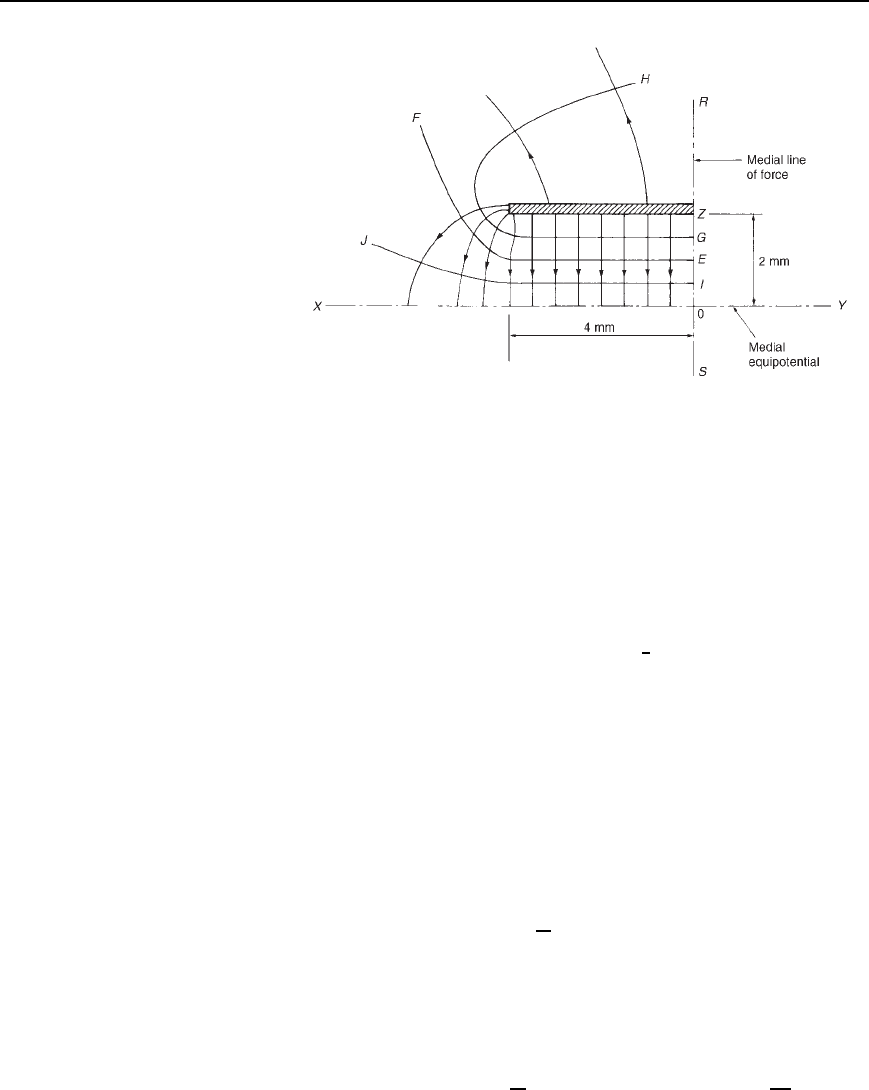
724 Electrical Circuit Theory and Technology
Figure 40.8
Considering just the top left part of the field, the field plot is estimated
as follows, with reference to Figure 40.8:
(i) Estimate the position of the equipotential EF which has the
mean potential between that of the plate and that of the medial
equipotential XO. F is not taken too far since it is difficult to
estimate. Point E will lie slightly closer to point Z than point O.
(ii) Estimate the positions of intermediate equipotentials GH and IJ.
(iii) All the equipotential lines plotted are
2
4
, i.e., 0.5 mm apart. Thus a
series of streamlines, cutting the equipotential at right angles, are
drawn, the streamlines being spaced 0.5 mm apart, with the object
of forming, as far as possible, curvilinear squares.
It may be necessary to erase the equipotentials and redraw them to fit the
lines of force. The field between the plates is almost uniform, giving a
field plot of true squares in this region. At the corner of the plates the
squares are smaller, this indicating a great stress in this region.
On the top of the plate the squares become very large, indicating that
the main field exists between the plates.
From equation (40.4),
total capacitance, C D ε
0
ε
r
x
m
n
farads
The number of parallel squares measured along each equipotential is about
13 in this case and the number of series squares measured along each line
of force is 4. Thus, for the plates shown in Figure 40.7, m D 2 ð 13 D 26
and n D 2 ð 4 D 8. Since x is 5 mm,
total capacitance D ε
0
ε
r
x
m
n
D 8.85 ð 10
12
3.50.005
26
8
D 0.50 pF
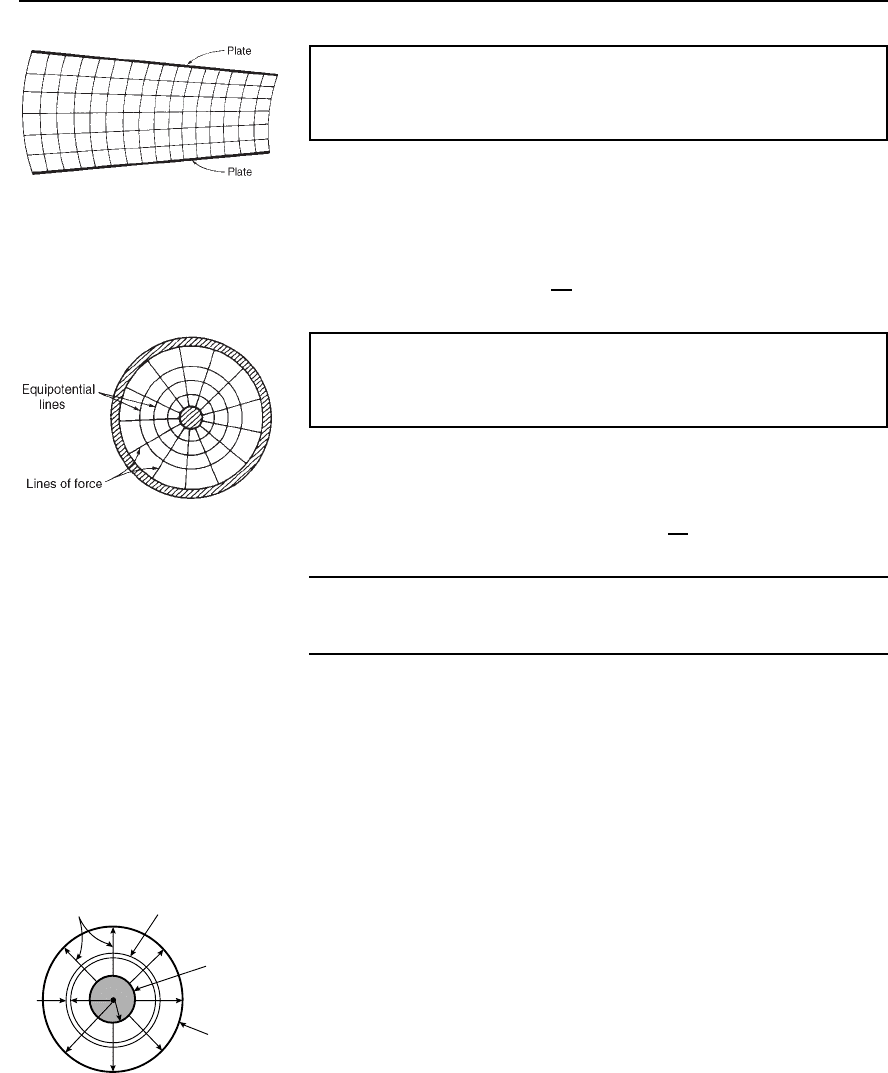
Field theory 725
Figure 40.9
Problem 1. A field plot between two metal plates is shown in
Figure 40.9. The relative permeability of the dielectric is 2.8.
Determine the capacitance per metre length of the system.
From equation (40.4), capacitance C D ε
0
ε
r
xm/n. From Figure 40.9,
m D 16, i.e., the number of parallel squares measured along each
equipotential, and n D 6, i.e., the number of series squares measured
along each line of force. Hence capacitance fo
ra1mlength,
C D 8.85 ð 10
12
2.81
16
6
D 66.08 pF
Problem 2. A field plot for a cross-section of a concentric cable is
shown in Figure 40.10. If the relative permeability of the dielectric
is 3.4, determine the capacitance of a 100 m length of the cable.
Figure 40.10
From equation (40.4), capacitance C D ε
0
ε
r
xm/n. In this case, m D 13
and n D 4. Also x D 100 m. Thus
capacitance C D 8.85 ð10
12
3.4100
13
4
D 9780 pF or 9.78 nF
Further problems on field plotting by curvilinear squares may be found in
Section 40.9, problems 1 to 3, page 753.
40.2 Capacitance
between concentric
cylinders
A concentric cable is one which contains two or more separate
conductors, arranged concentrically (i.e., having a common centre), with
insulation between them. In a coaxial cable, the central conductor,
which may be either solid or hollow, is surrounded by an outer tubular
conductor, the space in between being occupied by a dielectric. If air
is the dielectric then concentric insulating discs are used to prevent the
conductors touching each other. The two kinds of cable serve different
purposes. The main feature they have in common is a complete absence
of external flux and therefore a complete absence of interference with and
from other circuits.
The electric field between two concentric cylinders (i.e., a coaxial
cable) is shown in the cross-section of Figure 40.11. The conductors form
the boundary equipotentials for the field, the boundary equipotentials in
Figure 40.11 being concentric cylinders of radii a and b. The streamlines,
or lines of force, are radial lines cutting the equipotentials at right angles.
Let Q be the charge per unit length of the inner conductor. Then the
total flux across the dielectric per unit length is Q coulombs/metre. This
total flux will pass through the elemental cylinder of width υr at radius r
(shown in Figure 40.11) and a distance of 1 m into the plane of the
paper.
Inner
conductor
r
b
a
δr
Streamlines
Equipotential
Outer
conductor
Figure 40.11 Electric field
between two concentric cylinders
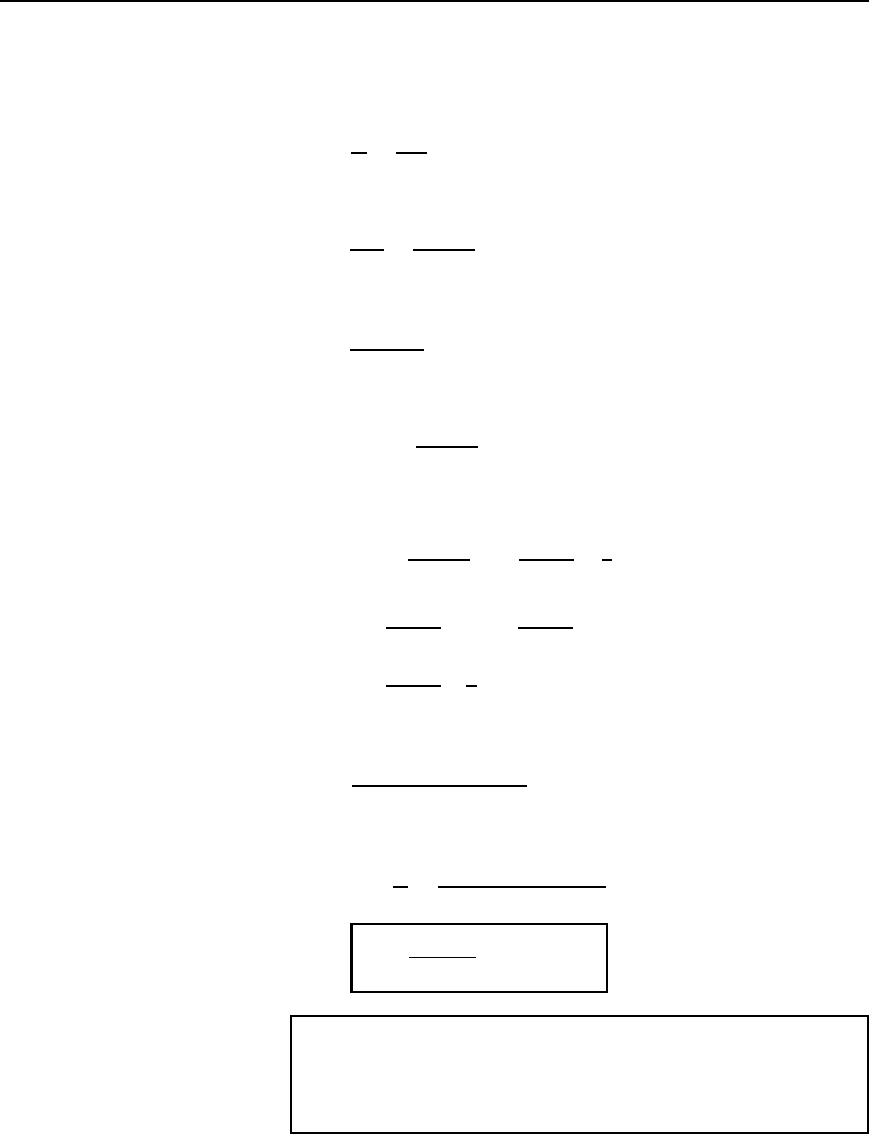
726 Electrical Circuit Theory and Technology
The surface area of a cylinder of lengt
h1mwithin the dielectric with
radius r is 2r ð 1 m
2
.
Hence the electric flux density at radius r,
D D
Q
A
D
Q
2r
The electric field strength or electric stress E, at radius r is given by
E D
D
ε
0
ε
r
D
Q
2rε
0
ε
r
volts/metre 40.5
Let the p.d. across the element be υV volts. Since
E D
voltage
thickness
voltage D E ð thickness. Therefore
υV D Eυr D
Q
2rε
0
ε
r
υr
The total p.d. between the boundaries,
V D
b
a
Q
2rε
0
ε
r
dr D
Q
2ε
0
ε
r
b
a
1
r
dr
D
Q
2ε
0
ε
r
[lnr]
b
a
D
Q
2ε
0
ε
r
[lnb ln a]
i.e., V D
Q
2ε
0
ε
r
ln
b
a
volts 40.6
The capacitance per unit length,
C D
charge per unit length
p.d.
Hence capacitance,
C D
Q
V
D
Q
Q/2ε
0
ε
r
lnb/a
i.e.,
C =
2p"
0
"
r
ln.b=a/
farads=metre
40.7
Problem 3. A coaxial cable has an inner core radius of 0.5 mm
and an outer conductor of internal radius 6.0 mm. Determine the
capacitance per metre length of the cable if the dielectric has a
relative permittivity of 2.7.
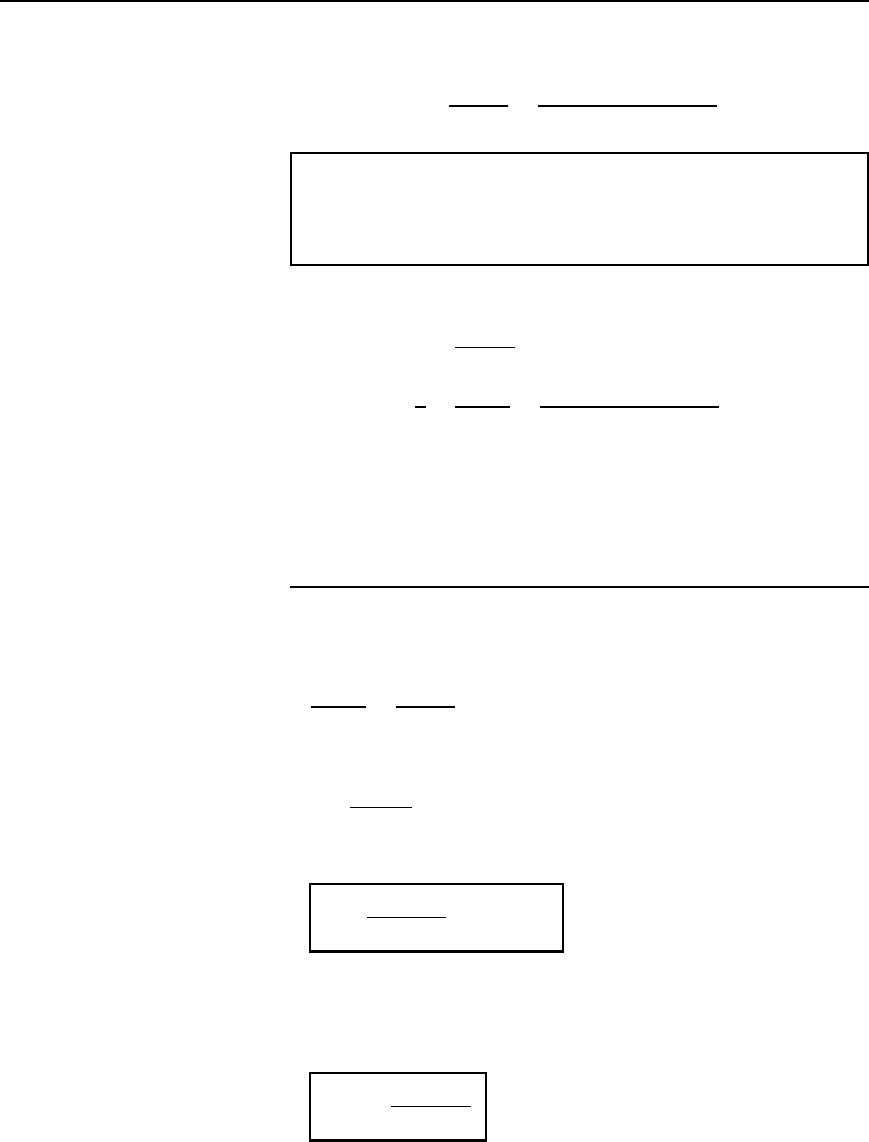
Field theory 727
From equation (40.7),
capacitance C D
2ε
0
ε
r
lnb/a
D
28.85 ð 10
12
2.7
ln6.0/0.5
D 60.4pF
Problem 4. A single-core concentric cable has a capacitance of
80 pF per metre length. The relative permittivity of the dielectric
is 3.5 and the core diameter is 8.0 mm. Determine the internal
diameter of the sheath.
From equation (40.7), capacitance
C D
2ε
0
ε
r
lnb/a
F/m
from which ln
b
a
D
2ε
0
ε
r
C
D
28.85 ð 10
12
3.5
80 ð 10
12
D 2.433
Since the core radius, a D 8.0/2 D 4.0 mm, lnb/4.0 D 2.433 and
b/4.0 D e
2.433
.
Thus the internal radius of the sheath, b D 4.0e
2.433
D 45.57 mm. Hence
the internal diameter of the sheath 2 ð 45.57 D 91.14 mm.
Dielectric stress
Rearranging equation (40.6) gives:
Q
2ε
0
ε
r
D
V
lnb/a
However, from equation (40.5),
E D
Q
2rε
0
ε
r
Thus dielectric stress,
E =
V
r ln.b=a/
volts=metre
40.8
From equation (40.8), the dielectric stress at any point is seen to be
inversely proportional to r, i.e., E / 1/r.
The dielectric stress E will have a maximum value when r is at its
minimum, i.e., when r D a. Thus
E
max
=
V
a ln.b=a/
40.9
